Following China’s rapid economic growth over the years, and the surge of e-commerce platforms, China’s cosmetic industry is one of the most lucrative and promising in the world. Attracting thousands of foreign companies every year, China has become an eldorado for cosmetic brands both from western countries and Asian countries. Even though the Korean Cosmetics industry has been extremely popular and lucrative over the years, Japanese brands are increasingly gaining popularity among Chinese consumers. Following economic tensions between South Korea and China as well as the increase in demand for high-quality and products from renowned brands, let’s look at the promising Japanese cosmetic industry in China.
Introduction to China Cosmetics & Beauty Market
As you probably already know, the Chinese population’s purchasing power has increased over the last decade, following China’s economic boom. Chinese consumers are more than ever ready to spend thousands of dollars on cosmetics and luxury goods. As a matter of fact, China is the world’s second-largest cosmetics market after the U.S in terms of revenue and consumption value, with 300 billion yuan of revenues as of 2019. The market is expected to reach 400 billion yuan as of 2023. Thus, it represents one of the most promising and lucrative industries for the years to come, especially for foreign brands.
Read full article on the Chinese Skincare Market here
How tech innovations have contributed to the rising popularity of cosmetics in China?
The cosmetic industry’s growth is also due to China’s digitalization, with consumers spending hours on their phones, on social media, and on e-commerce platforms. This phenomenon has completely reshaped their way of consumption, at the profit of brands that have to face tough competition. They now have to be creative and innovative in order to stand out and be prepared for the burgeoning demand for higher quality and premium products.
Indeed, for more than a decade, China has become a hub of innovation for many tech companies, China was able to take advantage of its technological advance in order to democratize the use of online platforms. Since 2010, the cosmetics industry has registered steady growth, and the rising use of these e-commerce platforms and Chinese consumers’ increasing purchasing power are key factors of this success.
Why is China a good market for foreign cosmetics brands?
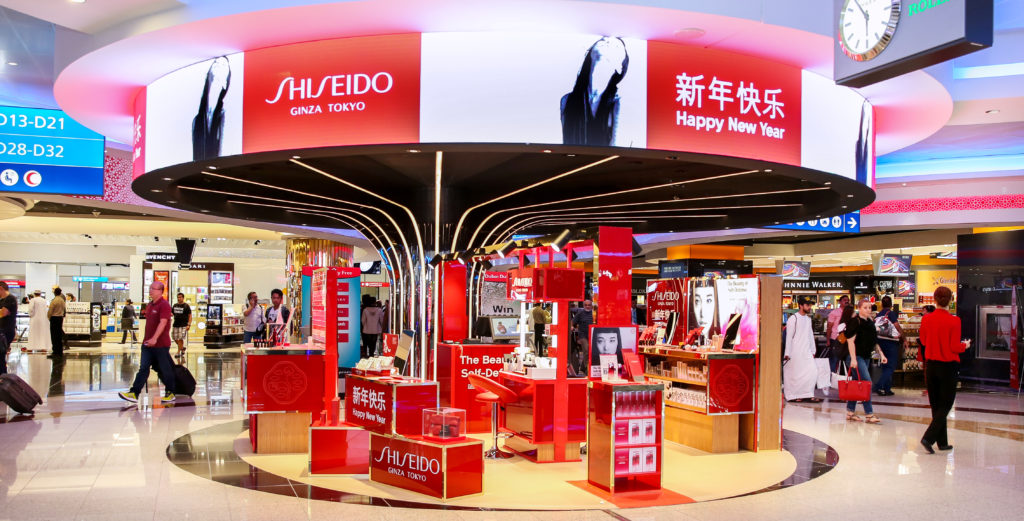
As a result of urbanization and modernization, growing disposable income, and social media, the cosmetic industry is facing a burgeoning demand for higher quality and premium products. Chinese consumers are more than ever paying attention to their appearance and skin. You also have to take into account that in China, more women are joining the workforce, thus driving the instinct of looking good at the workplace. Consumers’ demand for eco-friendliness products has also increased these past few years.
On the other hand, even though cosmetics products were at first mainly used by female consumers, the industry has also witnessed a surge in demand, and male consumers are now more inclined to use cosmetics as part of their daily routine. Thus, thanks to its huge population, China is a good and promising market for cosmetic brands.
Cosmetics & Beauty in China: A very competitive market
If you are looking to expand your activities in China, you probably already know that Chinese consumers are key drivers of the global cosmetic industry. But because of globalization, it is easier than before for foreign brands to enter the Chinese market. Even though cosmetic companies still have to comply with strict regulations, many popular international brands have had the opportunity to conquer the world’s most populous country.
It is also important to know that even though Korean cosmetics were for a long time at the top of the sales in China, brands have to face tough competitors, such as J-beauty products (Japanese products), and mostly local brands that are gaining strength in China. Japanese products are now one of the most competitive categories in the Chinese cosmetic industry.
The Japanese Cosmetics Industry in China
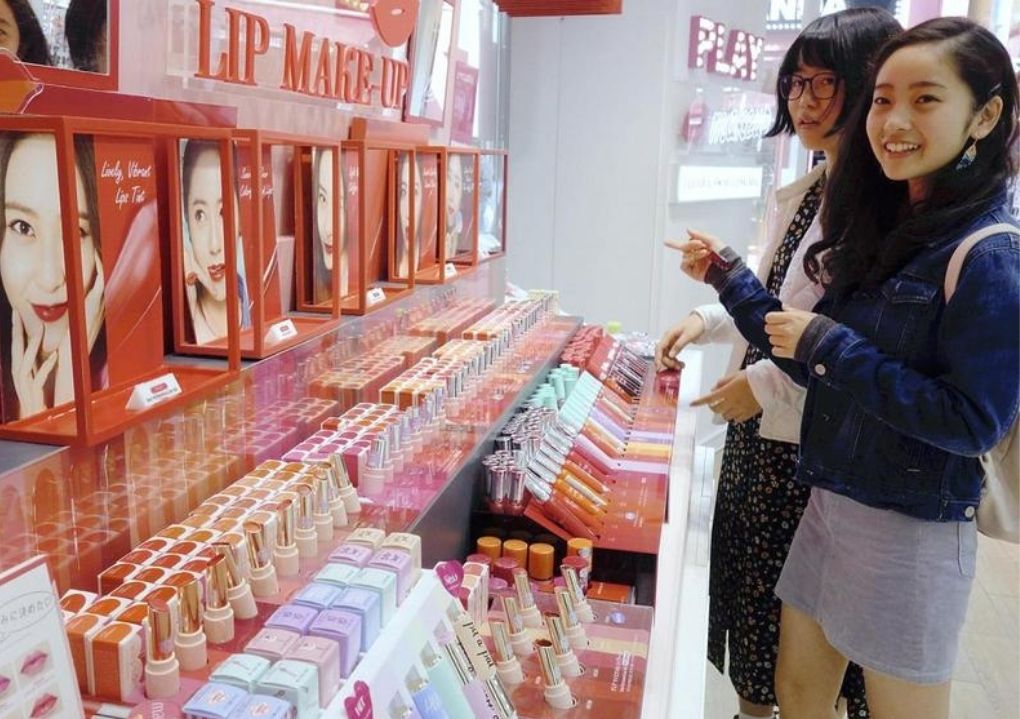
Japan’s popularity among the Chinese population
Over the years, Japan has become one of the favorite spots for Chinese tourists, looking for authenticity and tradition. This can also be explained by the fact that it is near China, and that the two countries have historical events and things in common (such as Kanji characters that were inspired by traditional Chinese). Moreover, it is not to be denied that many Chinese people are fond of manga, anime, cosplays, Jpop, and J-dramas. Thus, the cultural part of Japan plays a prominent role in its cosmetic success in China.
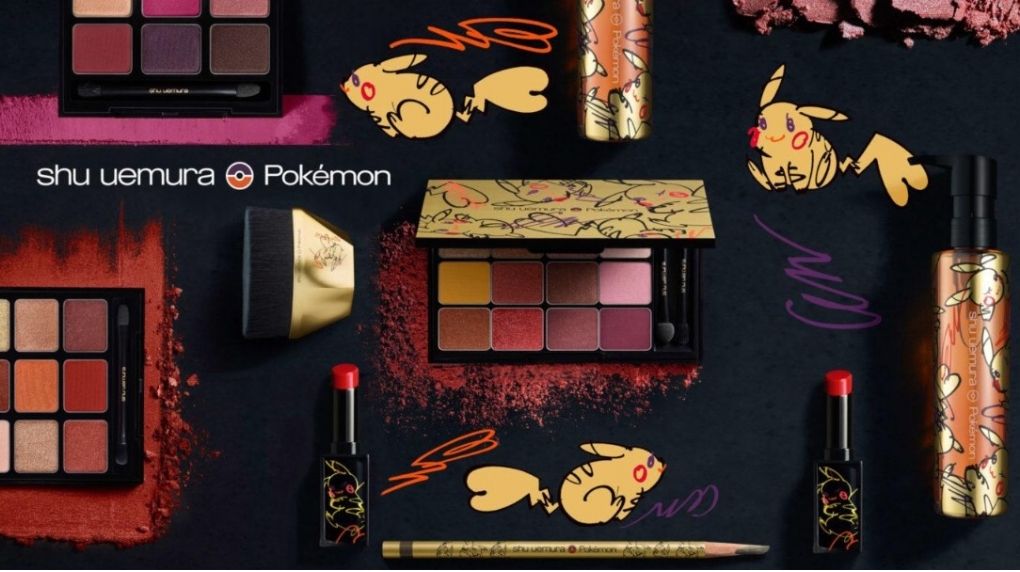
Another major trend from Japan is its large and rich video game industry that is everywhere in the streets of Tokyo for example. This phenomenon has exacerbated even more Japanese cosmetic brands that are collaborating with video game companies to promote their brand.
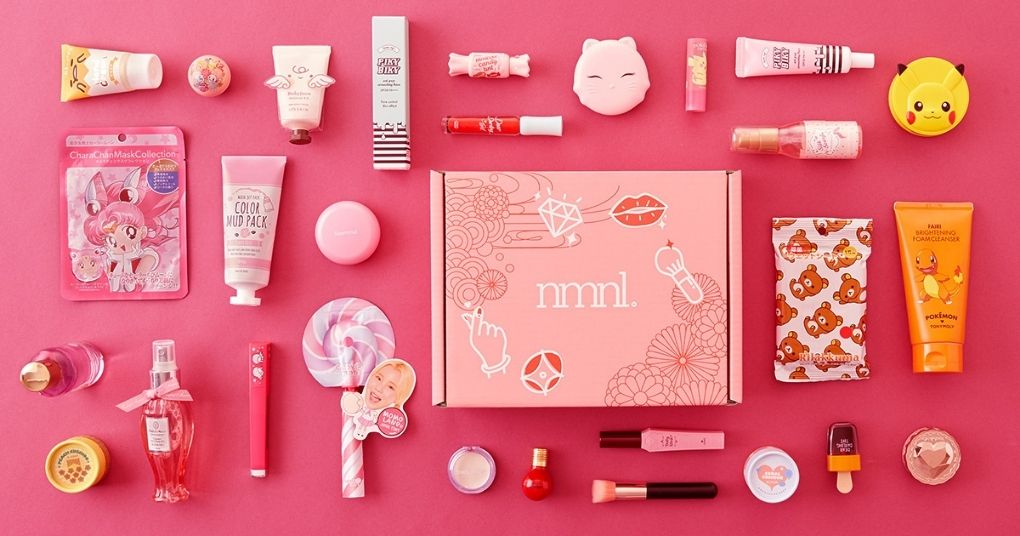
Moreover, many Chinese consumers are attracted by Japanese brands’ cuteness in terms of packaging and design, with a style which is ‘Kawai’ and colorful.
Why do Chinese consumers like Japanese cosmetics?

Chinese consumers tend to prefer foreign international brands over domestic brands. This can be explained by the fact that China had a lot of product scandals in the past, and foreign products are submitted to stricter regulations to enter the Chinese market. However, when we look deeper into the Chinese market, we can see that the most popular skincare products for example are Japanese ones.

According to this graphic, we can see that the two leading countries in terms of skin care products in China are Japan and Korea. It is estimated that 48% of Chinese consumers have Japanese skincare products, 44% have Korean products and 32% have European products.
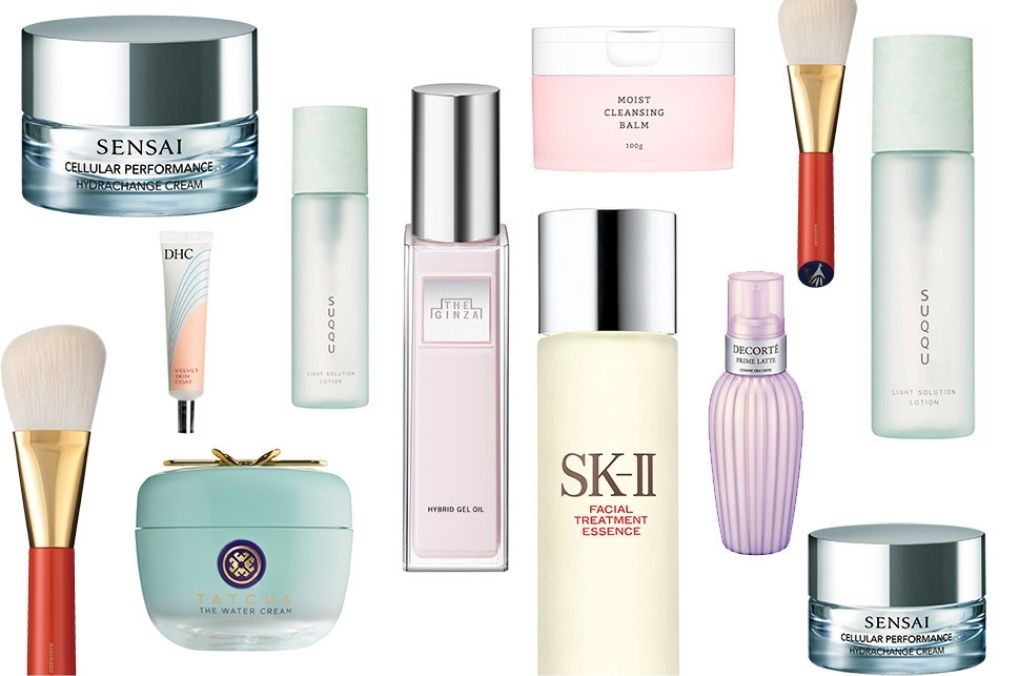
As a matter of fact, Japanese cosmetics are extremely popular among Chinese consumers thanks to their high-quality ingredients, natural virtues, as well as worldwide renown, with luxury cosmetic brands for example. Moreover, with Japan being China’s neighboring country, Japanese people also share the same perception of beauty and have almost the same kind of skin. Thus, it is easier for Japanese brands to understand and adapt their products to Chinese consumers, compared to western brands.
For example, you can look at these following criteria to see the most popular features for Chinese consumers:
According to the specificities and particularities of Chinese consumers that are similar to Japanese skins, you can focus on the following products: cleanser, lotion, toner, mask, etc. Thus, you can adapt your products to the Chinese market in the following areas:
- Products against excess sebum
In order to regulate the oil production of their skin (which is one of their priority), Japanese brands are putting ingredients that will reduce the production of oil as well as hydrate the skin. Mattifying moisturizers are also pretty popular, as well as masks and scrubs.
- Whitening agents
As mentioned before, white skin is still synonymous with beauty in China, as well as in most Asian countries such as Japan. For most Japanese brands, facial products have whitening agents included in it, which can explain why Japanese products are popular in China.
- Cosmeceuticals
The mix of “cosmetics” and “pharmaceutical” is becoming more popular in China because it meets dermatological needs in addition to purely aesthetic needs. It accounted for 90 million yuan as of 2020 and Japan was able to take advantage of this trend in order to produce and sell its cosmeceutical products in China.
How to sell your Japanese cosmetics products in China?
Following China’s rapid digitalization over the past decade, several e-commerce platforms were able to stand out in the Chinese market, grabbing over 782 million users as of 2020, and enabling this enormous spurt of China’s e-commerce sector. Thus, it is important for cosmetic brands to sell their products online, using e-commerce platforms.
On Which Chinese E-commerce platforms should you Sell your J-Beauty brand?
- Tmall: China #1 Online Market place for Cosmetics Brands
Founded in 2008 under the famous Alibaba group, Tmall (天猫), is a subsidiary of the e-commerce website Taobao (淘宝网). Its target market is primarily B2C (Business-To-Consumer). Tmall’s concept is ambitious and wise as it allows both local Chinese and international companies to sell their products through the platform in mainland China, Hong Kong, Macau, and Taiwan. Tmall stands out from its competitor’s thanks to its strict standards in terms of quality and renown.

Over the years, Tmall was able to attract the majority of online shoppers, as well as thousands of international brands selling cosmetic products. Nonetheless, platforms like JD.com and Tmall only accept high-quality products and brands that already have a good reputation in China. The Korean cosmetic products you’ll find on Tmall are most of the time from well-known brands.
- JD.com
Founded in 1998 by Liu Qiangdong in Beijing, JD (which stands for Jingdong 京东) was at the beginning only a magneto-optical store, which diversified over the years with electronics, computers, mobile phones, etc. In 2004, it opened its online retail platform and quickly became one of the two massive B2C online retailers in China with its competitor the Alibaba-run Tmall. Now, JD.com is partly owned by the giant Tencent, which has 20% of its stake. As of 2021, JD.com has over 470 million active customers.
Even though JD.com is the reference in terms of electronics and new technologies, it also provides a wide variety of cosmetic products, such as Japanese cosmetics. For example, Kao’s products are sold on JD.com, enabling the brand to attract Chinese consumers and purchase skincare and cosmetic products from Japanese brands such as Biore, Kanebo and Molton Brown.
JD.com has set its standards for online shopping through its commitment to quality, authenticity, and the variety of products it offers. Another asset of JD.com is the delivery time, which is, in general, the same day (or less than 24 hours). People can purchase their cosmetics, and be delivered within a few hours.
- Taobao: an entry door for many cosmetics japanese brands through daigou
Launched in 2003 by the Chinese giant Alibaba, Taobao (淘宝网) is one of the most popular online shopping platforms, specialized in both B2C and C2C transactions, as well as the most popular online entrepreneurship platform, enabling thousands of young entrepreneurs to be successful. It has hundreds of millions of products and service listings, which are really appreciated by Chinese consumers. As of 2019, it has 300 million daily active users and 668 million mobile monthly active users. Taobao accounts for nearly 60% of the total e-commerce sales in China.
Many Japanese cosmetic brands are using Taobao to sell their products. However, it is also worth mentioning that there are lots of fakes and counterfeiting in China. That’s why Chinese consumers tend to be more cautious when buying cosmetics.
If you want more information about Taobao, read our Guide to Selling on Taobao
- Xiaohongshu: High-end Beauty & Wellness products consumers
Founded in 2013, Xiaohongshu (小红书) also known as ‘The Little Red Book’ and ‘RED’, is a social media and one of the world’s largest community e-commerce platforms. Over the years, it has grown to become China’s foremost shopping platform in terms of beauty, fashion and luxury products. As of 2021, Xiaohongshu is boasting over 300 million registered users and 85 million monthly active users. It was also valued at more than USD 3 billion in 2018 and has the support of giants like Alibaba, Tencent, Zhenfund, Genesis Capital, etc.
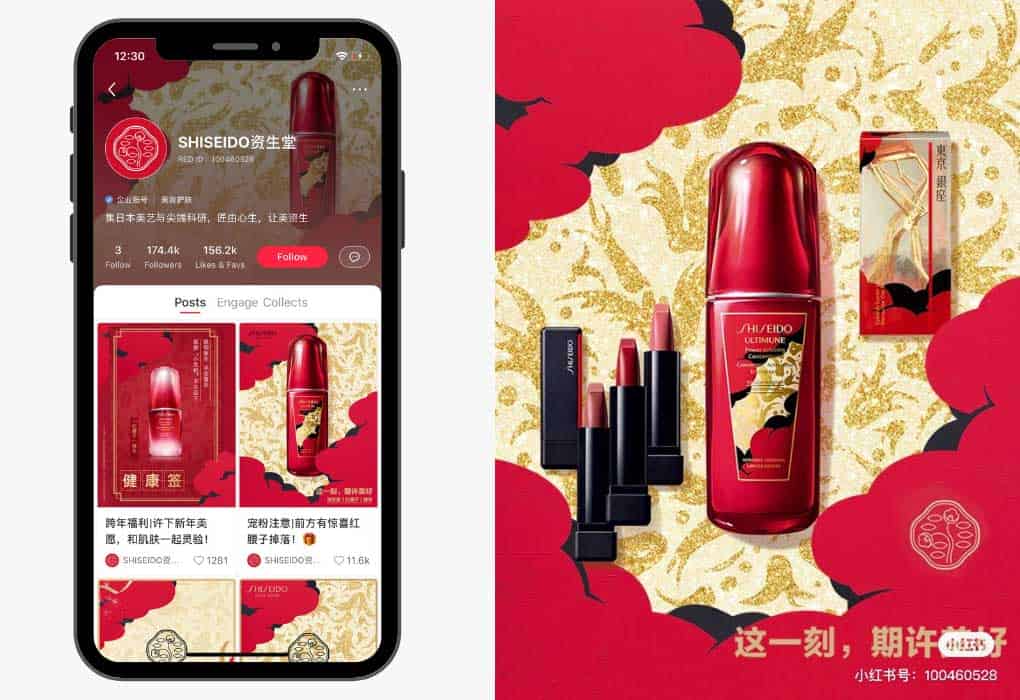
Xiaohongshu is not just a social media app, as users can also purchase on it. As a specialized app for cosmetics and having 80% of its users being young Chinese women, Xiaohongshu benefits from powerful word-of-mouth. With users mostly relying on KOLs recommendations instead of just buying products from famous international brands, Japanese brands have to conquer KOLs first if they want to attract quickly Chinese consumers.
If you want to know more about Shiseido’s strategy, you can read this interesting article from Jingdaily.
- Jumei: The Imported beauty Brand ecommerce app of China

Another extremely popular platform that has attracted the most well-known Japanese brands such as Shiseido, Kose and SK-II, is Jumei.com. Chinese consumers can easily find everything they want in terms of beauty, health, skincare and cosmetic products.
- Douyin’s flagship stores
Launched in 2016 and developed by the Chinese tech firm Beijing Bytedance, Douyin quickly became one of the fastest-growing short video apps in China. This sharing video platform allows users to watch and create short videos with music in the background, stickers, and animations thanks to easy-to-use video creation tools.

In March 2021, Douyin launched its flagship stores, available for brand accounts on its platform, marking a major step into e-commerce. Until now, Douyin was just a way to promote new products and popular items to consumers through short videos and live-streaming. Moreover, it was also possible for companies to send vouchers to their followers and add links to e-commerce platforms such as JD.com and Taobao. However, as this functionality is pretty new, only a few brands have already created their flagship stores.
Learn more about Douyin’s Flagship Stores
Physical stores are Still Popular to sell Cosmetics in China
Even though the majority of cosmetic brands are using e-commerce platforms in China, physical stores are still popular among Chinese consumers. They can receive advice choosing the right product, try the products with the help of experts, and compare directly in the store. Many Japanese cosmetic brands are already established in China, attracting Chinese customers looking for high-quality, popular and cute products.
How to promote your Japanese Cosmetics in China?

As traditional media are slowly dying in China, the Chinese market is mostly based on the online market and online communication. Focusing on the online segment to increase your reputation is definitely a relevant choice. A coherent online advertisement increases the brand’s notoriety, boosting its awareness, and developing its popularity. Because of the fierce competition, it is very effective for cosmetic brands to be guided and helped throughout the process of advertising in China.
Promote your Japanese Beauty Brand on Chinese Social media
With more than 989 million internet users in China, it has become essential for brands to be on social media. However, due to the Great Firewall, social apps such as Facebook, Instagram, Facebook, Twitter, and Snapchat are unavailable. This means that you will need to comply with Chinese social media if you want to target new Chinese consumers.
As you understand, the Chinese population is among the most connected in the world, and with a tech-savvy population, it is almost considered mandatory to have an official account and be at the core of trending topics. When looking for Japanese cosmetics, they will do research about the brand online. When hesitating between a brand or another, they will look at reviews, pictures, videos, etc.
- WeChat Official Account is critical for Beauty Brands in China
Created by the Chinese company Tencent and released in 2011, WeChat, also known as Weixin (微信) in China, is the most used social media in China with its 1.2 billion uses as of 2021, far beyond Weibo, and is expected to grow even more in 2022.
Worldwide, WeChat is one of the leading social networks, ranking sixth in terms of active user number, becoming a lucrative marketing platform with its plethora of different functionalities. Its success relies on the fact that Wechat was able to integrate almost all the features that made the success of the world’s most popular networks.
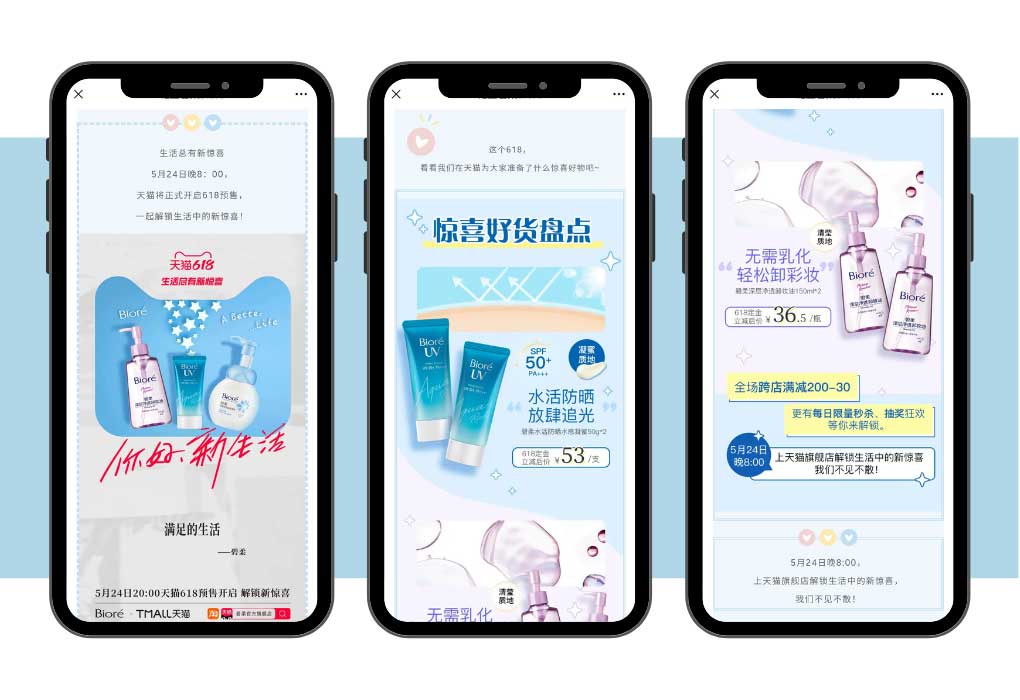
For example, one powerful and useful way to take advantage of WeChat is to create an H5 brochure that you’ll be able to share with your followers, and directly on your social media accounts. It is cost-effective, and people will be able to share it with their friends, like word-of-mouth.
If you want more information on WeChat, you can read our full Guide to WeChat and also our full guide to WeChat H5 Brochure
- Sina Weibo: the Chinese social media for Beauty Brands to advertise themselves
Launched in 2009 by the Chinese technology company Sina Corporation (新浪), Weibo (微博) is one of the biggest social media platforms in China. As its name indicates (“micro-blog”), Weibo provides micro-blogging services and is often compared to Twitter. However, it has evolved into a microblogging hybrid with Instagram, Pinterest, Reddit, and YouTube over the years.
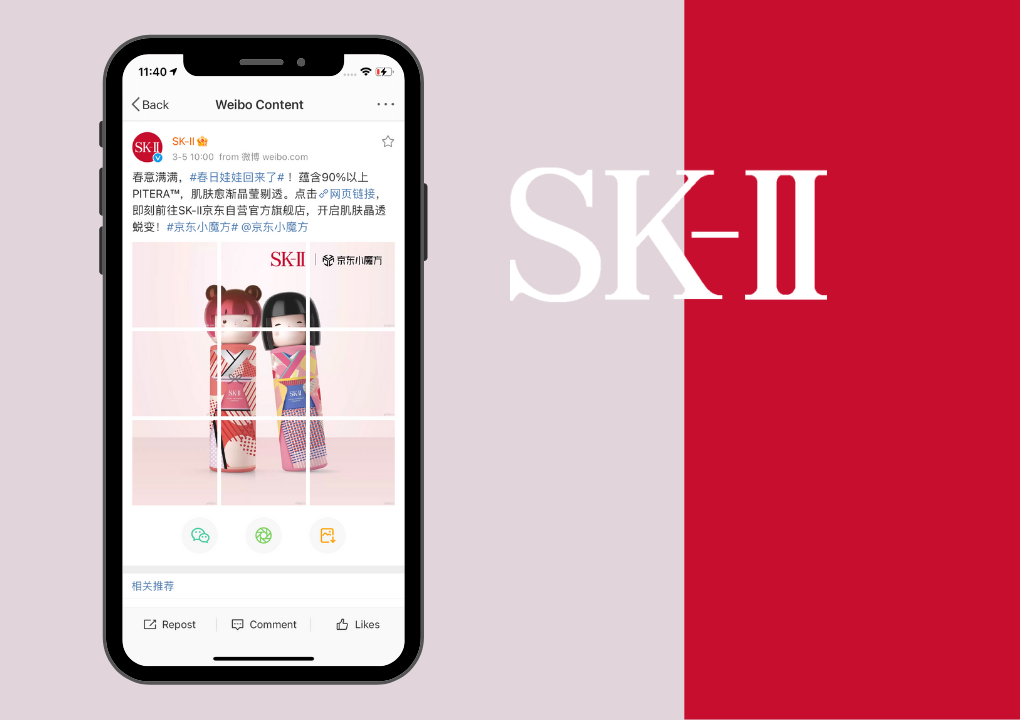
As of 2021, Weibo has 56.8% of the Chinese microblogging market in terms of active users, and 86.6% in terms of browsing time over Chinese competitors such as Tencent and Baidu. It has more than 511 monthly active users and millions of posts per day, making it the largest Chinese-language mobile portal. Almost all Chinese millennials are using this social app in order to follow celebrities, KOLs, brands, read news, etc.
With the majority of foreign brands having an official account on Weibo, you will probably have to consider creating an official account on Weibo. To do so, you can contact us and our team will take care of it.
- Attract Chinese Cosmetics Consumers with Short Videos on Douyin
As you probably already know, before providing flagship store services, Douyin is mainly a social app in which users can create short and entertaining videos. Thus, it is also a good way to promote Japanese cosmetics, as well as collaborate with Douyin’s KOLs.
Advertise your Japanese skincare brand with Chinese Kols
One of the most powerful ways to promote your cosmetic brand is to collaborate with KOLs (Key Opinion Leaders) that are sometimes more effective at selling a product than celebrities. Thus, many Japanese brands already know that they should collaborate with KOLs in order to attract a wider audience.
Moreover, many people will talk about your brand without collaborating with you, but it’s wonderful word-of-mouth for your brand. You’ll be able to find KOLs on every social media such as Xiaohongshu, Douyin, Weibo, etc.
Target Chinese J-Beauty Consumers with a Website in Mandarin
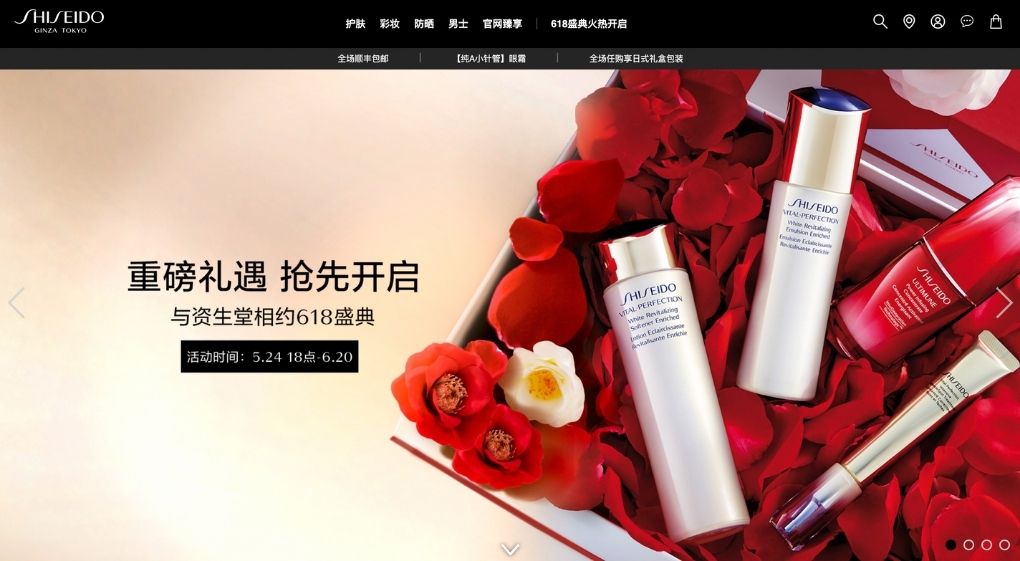
For most of the Japanese brands selling cosmetics in China, it is undeniable for them to create a website in Mandarin Chinese. In general, the first thing consumers will be looking at is your website. Indeed, they will enter your brand’s name on Baidu for example, then click on your website. Don’t forget that you must adapt your website for smartphones, as the majority of the population uses their smartphone to do online research, on their way to work, or during lunch break. Moreover, it is essential to have a Chinese website if you want to rank on Baidu.
Baidu SEO to Promote your J-Beauty Brand
As the most popular search engine in China by far, Baidu simply is a step you can’t skip in China. However, increasing your website’s ranking on Baidu requires a slightly different way of thinking about Search Engine Optimization (SEO) compared to what you might be used to with Google. Considered as the “Chinese Google”, Baidu is the most popular Chinese Search Engine and stands as the 5th most consulted website in the world. As of 2021, it represents 71.9% of the Chinese market share.
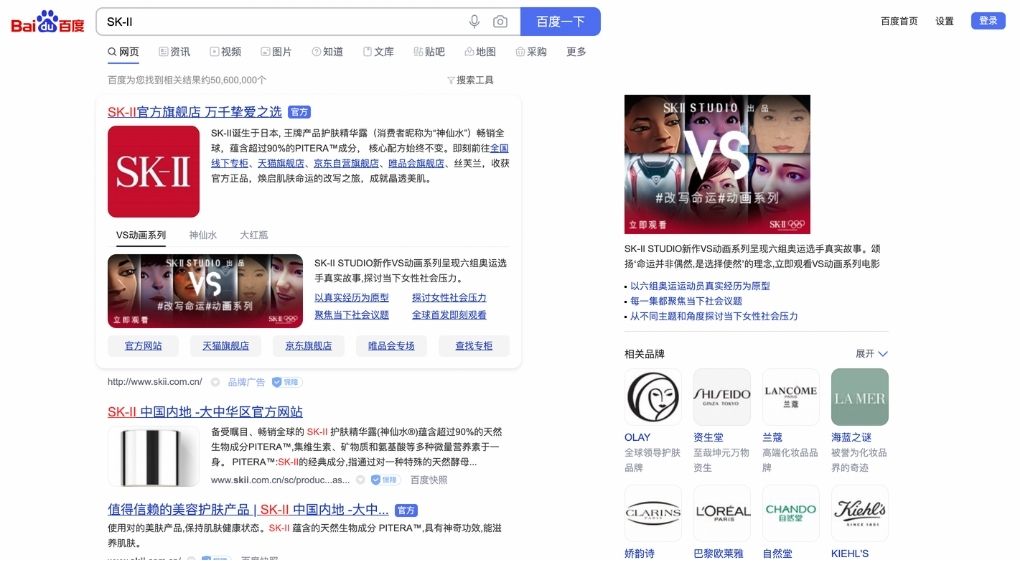
Baidu is an opening window to enter the Chinese market as consumers will do their research on it in order to discover your brand. If you are not visible through the first pages, you won’t probably get much traffic. That’s why working on Baidu’s SEO is as important as setting up your e-commerce online shop. In order to do it successfully without wasting too much time, you can contact specialized experts such as GMA. We have helped many companies increase successfully their rank on Baidu, gaining much traffic, and thus, much more clients.
SK-II’s Success in China: Top Japanese Brand
As one of the most profitable brands in terms of cosmetics in China, SK-II is a Japanese cosmetics brand launched in the early 1980s. It is sold and marketed as a premium skincare solution in East Asia as well as North America, Europe, and Australia.

SK-II has rolled out a series of measures to engage with younger generations of consumers through art exhibitions and retail enhancement with the support of digital technology.
- Brand storytelling
For example, SK-II has launched a “Power of Pitera” art exhibition with a collection of works of art that tell the story of its iconic essence Pitera, which is a liquid naturally derived from the yeast fermentation process.
In this way he has been able to exploit his marketing strategy by telling the story of the product creation, increasing consumer involvement. Furthermore, he stressed the use of natural products, which as we said earlier, are very important for today’s Chinese consumers.
- Influencers/KOLs
The brand also used the Chinese actress Tang Wei as a brand ambassador. With a bold and sincere closeup of Tang’s face, the artwork aims to showcase the transformation to clear skin that millions of women have experienced with Pitera.
- Taking advantage of Digitalization

All our lives today, from the moment we wake up to the time we go to sleep, are accompanied by technological devices, especially for Chinese consumers. That’s why SK-II is focused on digital strategy by increasing its brand awareness and selling its products on Chinese apps like Wechat, Xiaohongshu, and Weibo.
Contact us if you want to sell & promote your Japanese cosmetics brand in China
With China being the world’s second-largest market in terms of cosmetics, many brands are trying to enter the Chinese market in order to conquer a wide audience. However, as demonstrated in this article, you will have to understand all of its subtleties in order to successfully manage to attract customers and stay in the long term.
Collaborating with an agency specialized in the Chinese market is the best way to achieve your goal and increase your Return On Investment. As all companies are different, the marketing and advertising strategy must be tailored according to your needs and within your financial means. Proud of the success of the companies we have helped over the years, we know exactly what you should implement as part of your advertising and marketing strategy.

Thus, if you have questions about selling, advertising, exporting, etc. your cosmetics in China, contact us directly, and we will reply to you within 24 hours.

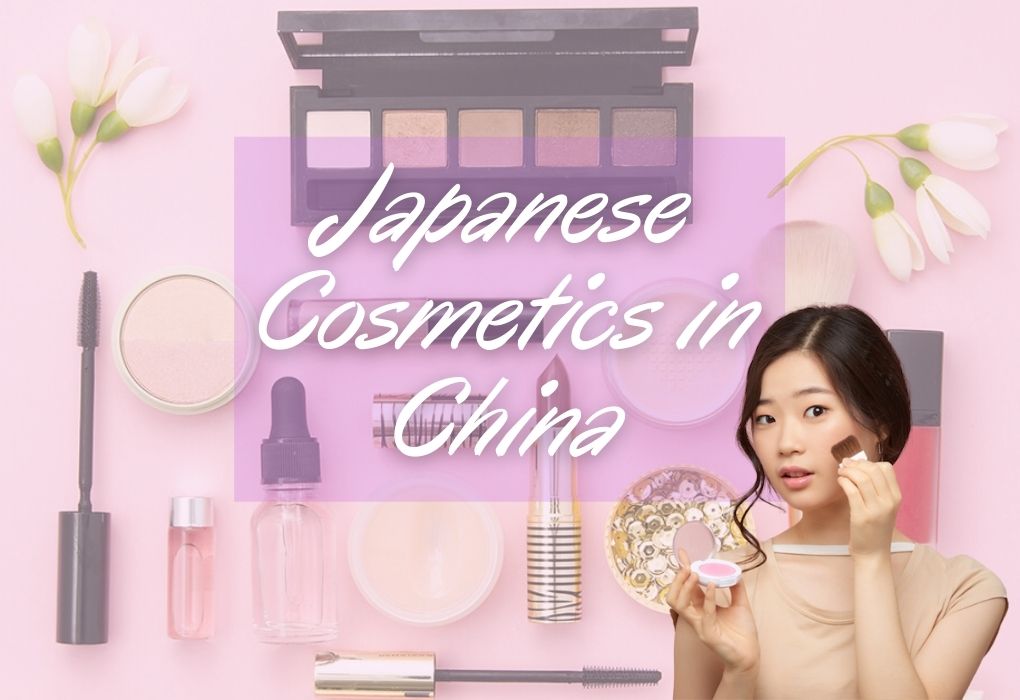
1 comment
japanese sunscreen
Foreign multinational brands are preferred by Chinese customers above local brands. This can be explained by the fact that China has had a history of product recalls, and international items must adhere to tougher restrictions in order to reach the Chinese market. Thank you!